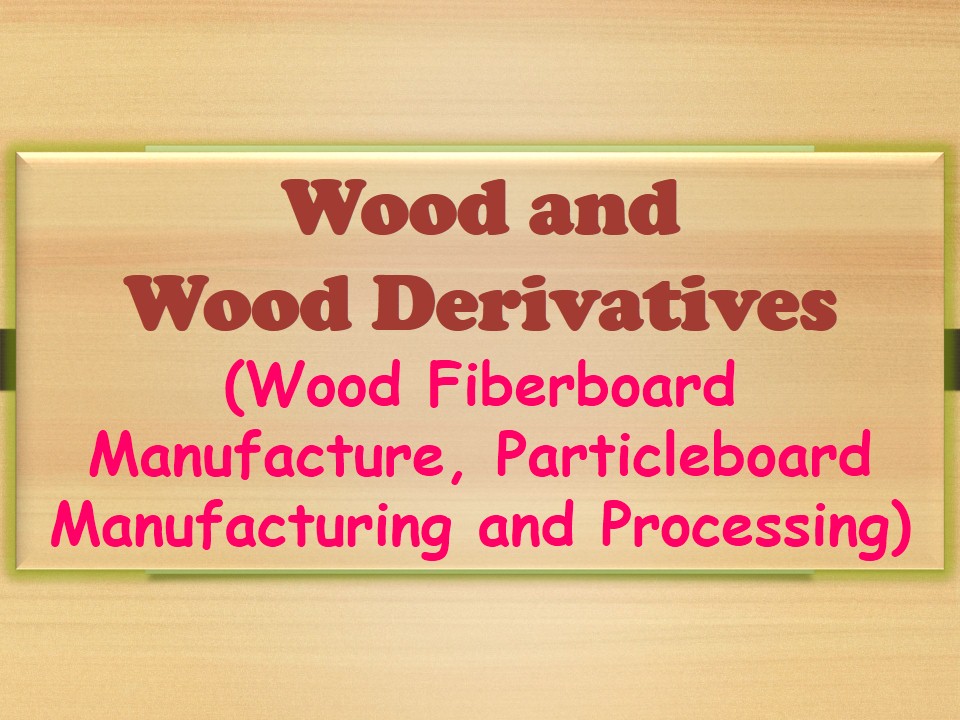
Wood has been used for hundreds of thousands of years for both fuel and as a construction material. Wood is an organic material, a natural composite of cellulose fibers (which are strong in tension) embedded in a matrix of lignin which resists compression. In the strict sense wood is produced as secondary xylem in the stems of trees (and other woody plants). Wood is used for millennia for many purposes, primarily as a fuel or as a construction material for making houses, tools, weapons, furniture, packaging, artworks, and paper. Wood is composed of cells, and the cell walls are composed of micro fibrils of cellulose and hemicellulose impregnated with lignin. The derivation of chemicals from wood is carried out wherever technical utility and economic conditions have combined to make it feasible. In a living tree it performs a support function, enabling woody plants to grow large or to stand up for themselves. It also mediates the transfer of water and nutrients to the leaves and other growing tissues. Wood may also refer to other plant materials with comparable properties, and to material engineered from wood, or wood chips or fiber. Wood and man have coexisted on this planet from the beginning and wood, as a renewable resource, has provided man with tools, weapons and shelter. Wood, when dry, has unique physical properties in that its tensile strength, bending strength, compression strength, impact resistance and hardness per unit weight are the highest of all construction materials. Wood polymer composites (WPC) are materials in which wood is impregnated with monomers that are then polymerized in the wood to tailor the material for special applications. The resulting properties of these materials, from lightness and enhanced mechanical properties to greater sustainability, has meant a growing number of applications in such areas as building, construction and automotive engineering. Other uses of wood in furniture, buildings, bridges, and as a source of energy are widely known. Wood is perhaps the most used component in our daily life, from home building and furnishings to everything from the tables to the doors are made of wood, and for the people living in colder climates, wood holds even greater importance.
Fiberboard is a low-density insulation board used for housing, roofing, and office furnishings. Hardboard is similar to fiberboard, except that hardboard is more dense than fiberboard. Hardboard is used for applications in housing (e.g., exterior siding, garage doors, and interior door facings), furniture, store fixtures, automotive interiors, and toys. The most frequently used raw material for production of fiberboard products is wood chips which are first softened in a pressurized steam vessel (digester) and then refined or pulped into wood fibers. The fibers may then be mixed with resin, formed into mats, and pressed and/or dried to form panel products. Other materials may be added during manufacture to improve certain properties such as stiffness, hardness, finishing properties, resistance to abrasion and moisture, as well as to increase strength, durability and utility. Like every living organism, each tree is unique. There are hundreds of different tree species, and individual trees within a species vary widely, depending on age and the amount of water, food, and sunlight during growth. Even within one tree there are many variables; knots, sap, heart wood, etc. Wood as a raw material is infinitely variable.
Hardboard is a manufactured product made from wood. Ideally each piece should be perfectly uniform. Of course, perfect uniformity is never attained but the degree to which it is approached is one of the most important factors in determining the utility of particular types of hardboard. Certainly the over-riding quality control consideration in every hard-board plant is making a uniform product from an infinitely variable raw material.
There is huge demand of particle board in India and all over world. Particle board market growing very fast. Due to growing deforestation there is bright future of particle board. Any entrepreneur can well venture in this project.
Demand of good quality of building materials to replace the traditional materials and the need for cost effective and durable materials for the low cost housing has necessitated the researchers to develop variety of new and innovative building materials. Construction materials of special requirements for the houses in different geographical region to overcome the risk of natural hazard and for protection from sever climatic conditions has also emphasised the need for development of lightweight, insulating, cost effective, durable and environment friendly building materials.
Some of the fundamentals of the book are wood structure and chemical composition, chemical change in wood associated with wood fiberboard manufacture, chemical changes in wood effected by furnish preparation processes, bark extracts as bonding agent for particle board , wood polymer composites and their industrial applications , chemical reactions of preservatives with wood, activation of wood surface and nonconventional bonding , chemistry of weathering and protection , weathering of chemically modified woods, energy and chemicals from wood, charcoal and other chemicals, etc.
The developments in wood industry in the country are mainly attributed to the pioneering work carried in the field of wooden products. There are lots of chemicals and other products extracted from wood. This book contains processes of various wooden products and its derivatives. This is the first book of its kind which is invaluable resource to research scholars, entrepreneurs, technocrats, institutes, libraries and existing one.
See more
http://www.entrepreneurindia.co/
Email:
Tags
Bark Extracts, Best small and cottage scale industries, Biological Decomposition, Business guidance for Wood processing, Business Plan for a Startup Business, Business start-up, Chipboard manufacturing, Construction material, Energy and Chemicals from Wood, Fiberboard, Fire Retardancy, Great Opportunity for Startup, Hardboard Manufacturing, How fiberboard is made, How to start a successful Wood processing business, How to Start a Wood processing industry?, How to Start a Wood Production Business, How to start wood Processing Industry in India, Manufactured wood, Manufacturing Process of Fiberboard, Materials Wood & its derivatives, Modern small and cottage scale industries, Molecular Forces, Most Profitable Wood Processing Business Ideas, New small scale ideas in Wood processing industry, Nonconventional Bonding, Particle Board Manufacturing Process, Particleboard Manufacture and Processing, Particleboard Manufacturing, Particleboard Processing, Polymer Composites, Polyurethane Foams, Profitable small and cottage scale industries, Profitable Small Scale Wood Manufacturing, Project for startups, Pyrolysis and Combustion, Setting up and opening your wood Business, Setting up of Wood Processing Units, Small Scale Wood Processing Projects, Small scale wood production line, Small Start-up Business Project, Start Up India, Stand Up India, Starting a Wood Processing Business, Start-up Business Plan for Wood processing, Startup ideas, Startup Project for Wood processing, Startup project plan, Startup Project, Technology Book on Wood and Its Derivatives, Thermoplastic, Weathering and Protection, What are wood derivatives, Wood and Its Derivatives Technology Book, Wood and its derivatives, Wood and Wood Derivatives, Wood Based Small Scale Industries Projects, Wood Derivatives, Wood Fiberboard Manufacture, Wood manufacturing processes, Wood Processing & Wood Based Profitable Projects, Wood processing Business, Wood Processing Industry in India, Wood processing plant, Wood Processing Projects, Wood processing Small Business Manufacturing
Contact Form
[contact-form][contact-field label=’Name’ type=’name’ required=’1’/][contact-field label=’Email’ type=’email’ required=’1’/][contact-field label=’Country’ type=’text’ required=’1’/][contact-field label=’Mobile’ type=’text’/][contact-field label=’Website’ type=’url’/][contact-field label=’Comment’ type=’textarea’ required=’1’/][/contact-form]





